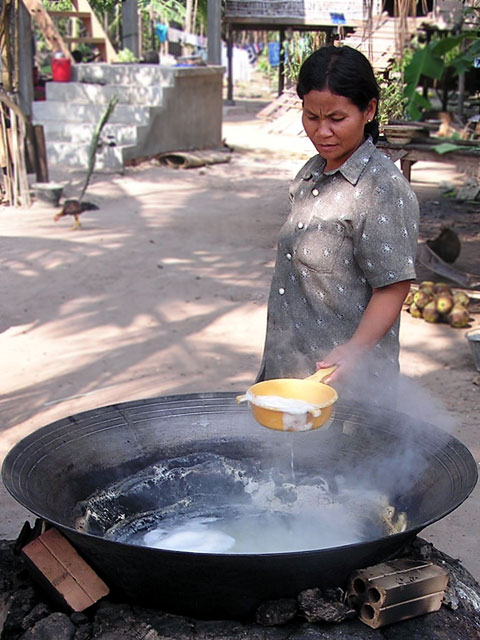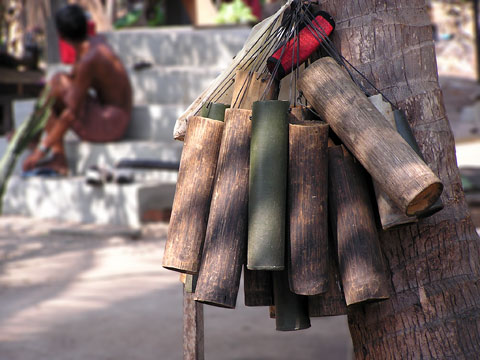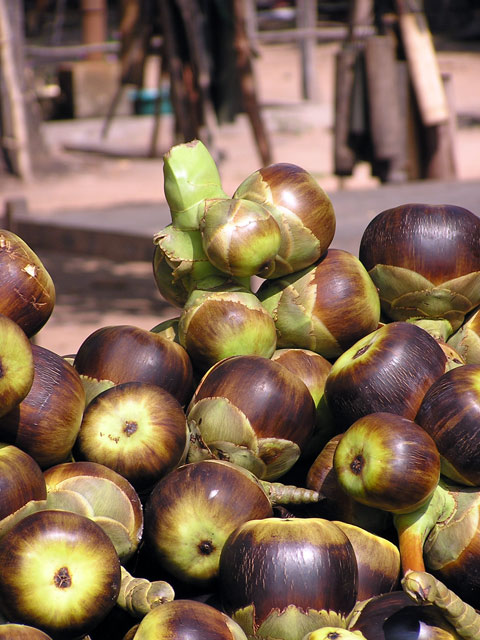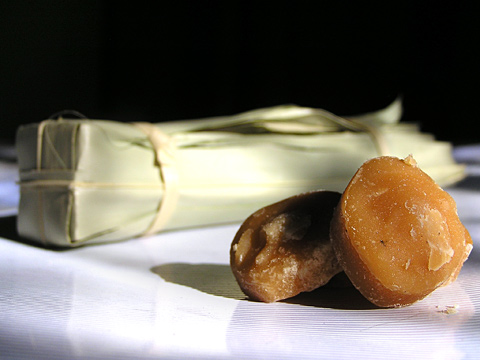The roadside from Siem Reap to the outlying temple of Banteay Srei is dotted with huge woks filled with a foaming, sweet mystery. Most tourists steam past in their tour buses and tuk tuks, desperate to hit Banteay Srei before the morning light dissipates and thus don’t get the chance to discover what those woks hold.
Lien (above) makes a living by tapping sugar palm trees, refining the sap by slowly boiling it over an open flame while removing the foamy impurities, and then selling the resulting palm sugar to the tourists with the time to stop. Tourism has created a tiny windfall for the local vendors – most roadside houses have a small palm sugar stall – but business does not seem to be booming.
Trees are tapped by her husband twice daily with the raw sap collected in above bamboo tubes (ampong). The sap comes from the cut stalks of the palm’s flowers which reside in the top of the palm, and many palms in the surrounding villages have a makeshift bamboo ladder haphazardly lashed to their trunk to aid climbers. The yield of each tree varies depending on the skill of the individual tapper with a good tree yielding 5 to 6 litres of sap every day.
Trees also yield the photogenic palm fruit. According to my friends at the FAO, each palm “may bear eight to fifteen bunches of fruit with a total of about 80 pieces of fruit per year”.
The finished product is moulded into small discs of palm sugar which remain hard but slightly crumbly. Pure Cambodian palm sugar is generally the above colour; lighter sugars will often have cane sugar added.
See also: Godspeed, you palm sap vendor




Amazing photos! Keep them coming.
I like the palm sugar very much!
This is very interesting , I have been studying about palm sap and what is done with it around the world, many products are made from this sap and it is very good for you.
Thank You